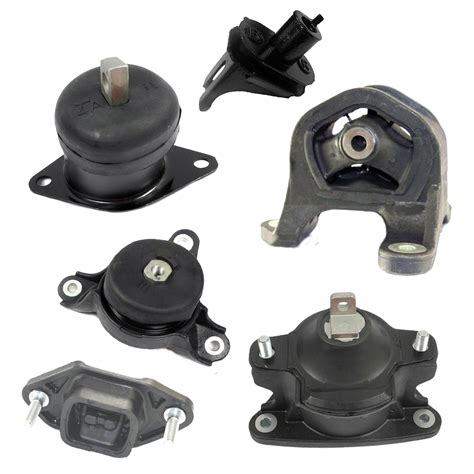Discover the role and importance of engine transmission mounts, signs of wear, and essential maintenance tips for optimal vehicle performance.When it comes to your vehicle’s performance, one component that often goes unnoticed is the engine transmission mount. This crucial part plays a vital role in stabilizing the engine and transmission, ensuring a smooth ride and effective power transfer. As you delve into this blog post, we will explore what an engine transmission mount is, its essential functions, and how to identify the common signs of wear and tear. Understanding the importance of timely replacement and maintenance of these mounts can significantly enhance your vehicle’s longevity and performance. Whether you’re a car enthusiast or a casual driver, this guide will provide you with valuable insights to keep your engine and transmission system running smoothly.
What is an engine transmission mount?
The engine transmission mount is a vital component located within the vehicle’s engine bay, serving the essential function of securing the engine and transmission to the vehicle’s chassis, thereby maintaining the proper alignment and reducing vibrations produced during operation.
These mounts are typically constructed from a combination of rubber and metal, which allows them to absorb shocks and vibrations while retaining their structural integrity, ultimately contributing to the overall stability and performance of the vehicle. In essence, they act as a buffer, preventing excessive movement of the engine and transmission when the vehicle is in motion or undergoing sudden acceleration and deceleration.
The importance of the engine transmission mount cannot be overstated, as it plays a crucial role in ensuring that the power generated by the engine is effectively transmitted to the wheels, and any deterioration or failure of this component can lead to serious mechanical issues, including misalignment, increased wear on driving components, and a significant decline in driving comfort.
The role of the engine transmission mount
The engine transmission mount plays a crucial role in the functionality and reliability of a vehicle’s engine system, serving as a vital component that not only supports the engine and transmission but also helps to dampen vibrations that occur during operation, thereby enhancing the overall riding experience for passengers while protecting against potential damage to surrounding components.
Furthermore, the engine transmission mount aids in maintaining proper alignment between the engine, transmission, and drive shaft, which is essential for the efficient transfer of power from the engine to the wheels; an improperly aligned system can lead to increased wear on these parts and may affect the vehicle’s handling and safety.
In essence, the engine transmission mount functions as a buffer against the harsh vibrations and movements generated by the engine, absorbing shock and stabilizing the drivetrain, which is particularly important during acceleration and deceleration, as this ensures that the vehicle operates smoothly and efficiently while prolonging the lifespan of both the engine and transmission components.
Common signs of a worn out mount
When it comes to the engine transmission mount, there are several critical indicators that can signify its wear and tear, which may lead to complications in vehicle performance and safety. One of the most prevalent signs is the presence of unusual vibrations while driving, particularly when accelerating or shifting gears; these vibrations can be attributed to insufficient support from the mount, which causes increased movement of the engine and transmission assembly.
Another notable sign is the occurrence of clunking noises when shifting into gear; if you hear a thud or a loud clunk, particularly when moving from park to drive or reverse, it may be a clear indication that the mount has become deteriorated and is no longer able to absorb the shocks effectively. This poor suppression of vibrations and noises can not only affect the riding comfort but also worsen over time if left unaddressed.
Additionally, one should be observant of any misalignment issues occurring within the engine compartment, represented by noticeable changes in engine positioning, which can often lead to accessory component strain and eventual failure if the mount’s structural integrity is compromised. Therefore, regularly inspecting for these signs of a worn-out mount can assist vehicle owners in maintaining their cars in optimal condition, preventing extensive damage to the engine
Importance of replacing a damaged mount
The engine transmission mount, a vital component of any vehicle’s structural integrity, plays a pivotal role in securing the engine and transmission to the chassis, and over time, it can suffer from wear and tear that necessitates immediate attention and replacement for a multitude of reasons.
When a mount becomes damaged, it can lead to severe repercussions, not only compromising the overall performance of the vehicle but also resulting in unforeseen expenses related to further mechanical failures, which can often escalate due to a lack of prompt maintenance and replacement.
To ensure optimum safety and performance, it is crucial to recognize the importance of addressing mount issues; therefore, regular inspections, coupled with timely replacements, can yield significant long-term benefits, ultimately extending the life of the vehicle while enhancing the driving experience.
Tips for maintaining engine transmission mounts
Maintaining engine transmission mounts is crucial to ensure the longevity and overall performance of your vehicle, as these components play a significant role in supporting the engine and the transmission, absorbing vibrations, and preventing excessive movement that could lead to mechanical failures; consequently, by following a few essential maintenance tips, you can help prolong their lifespan and avoid costly repairs.
One of the most effective ways to maintain your engine transmission mounts is to regularly inspect them for any signs of wear and tear, particularly looking for cracks, tears, or any visible damage in the rubber or metal parts of the mounts, which can be identified during routine service checks, as any signs of degradation could indicate that the mounts are failing and need immediate attention.
Additionally, keeping the surrounding areas clean and free from debris is of utmost importance, since dirt and grime can accumulate around the mounts and lead to premature failure, by adhering to the mounting surfaces and restricting movement, thereby creating unnecessary stress on the mounts; thus, a simple cleaning routine can significantly enhance the effectiveness of these vital components.
It is equally beneficial to pay attention to your vehicle’s driving habits, as aggressive driving, such as rapid acceleration and harsh braking, can put extra stress on the engine transmission mounts, leading to faster wear over time, hence practicing smooth driving and avoiding sudden shifts can pres
Frequently Asked Questions
What is an engine transmission mount?
An engine transmission mount is a component that serves to secure the engine and transmission to the vehicle’s chassis, absorbing vibrations and maintaining proper alignment.
How does a transmission mount work?
A transmission mount works by providing support to the transmission while also dampening vibrations that occur during engine operation. It usually consists of rubber or polyurethane that allows for some flexibility.
What are the signs of a failing engine transmission mount?
Signs of a failing engine transmission mount include excessive vibrations, unusual noises (like clunking or thudding), misalignment of the engine or transmission, and visible damage or deterioration of the mount material.
How are engine transmission mounts installed?
Engine transmission mounts are typically installed by lifting the engine or transmission slightly, removing the old mount, and bolting the new one into place. It’s advisable to consult a professional mechanic for proper installation.
Can a bad transmission mount affect vehicle performance?
Yes, a bad transmission mount can negatively affect vehicle performance by causing misalignment of the drivetrain, leading to issues such as rough shifting, increased vibrations, and potential damage to other components.
How often should engine transmission mounts be replaced?
Engine transmission mounts don’t have a specific lifespan, but they should be inspected regularly and replaced if signs of wear or damage are present, especially during major service intervals or if the vehicle experiences excessive vibrations.
Are there different types of engine transmission mounts?
Yes, there are different types of engine transmission mounts, including rubber, hydraulic, and solid mounts. Each type has unique properties and is designed for specific applications, depending on factors like performance and comfort.





